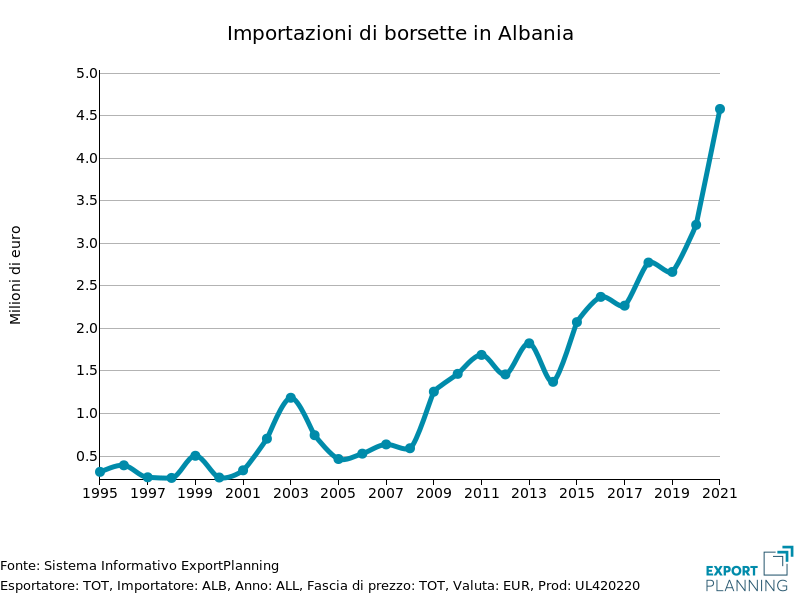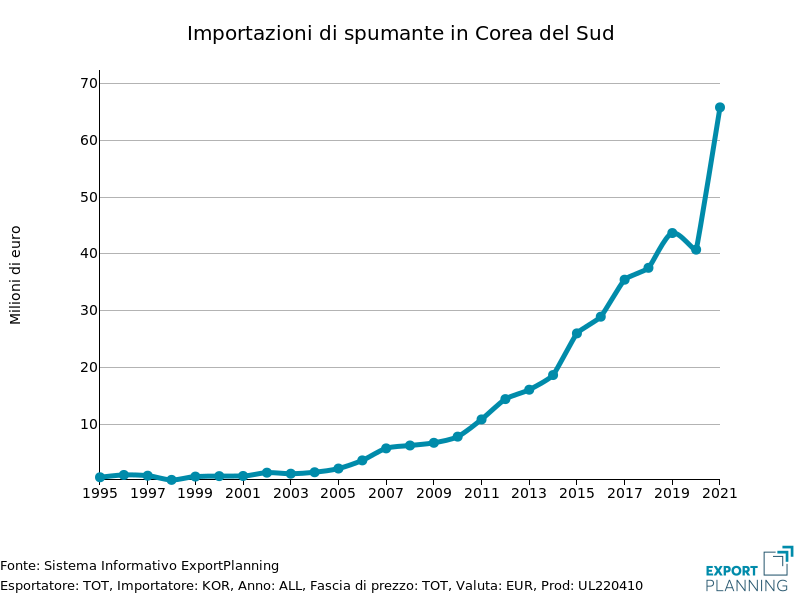Measuring demand potential: big data for market selection
The importance of intercepting the acceleration stage in the development of imports of a product to enable the enterprise to "capture the moment"
Published by Simone Zambelli. .
Internationalisation Emerging markets Export markets Foreign markets International marketing
Log in to use the pretty print function and embed function.
Aren't you signed up yet?
signup!
For an SME that wants to grow, the road to internationalization can certainly offer very high potential, but it can nevertheless be a very delicate step. That is why it must be approached with the right approach and expertise, where information can be the objective and robust starting point on which to develop one's strategy.
The success or otherwise of sales in a given market by a company seeking to export depends on a multitude of factors, among the most important of which we can identify:
- the strategy of the enterprise;
- the effectiveness of strategy implementation;
- resources invested;
- the potential of the target market.
The purpose of this article is to focus particularly on the last point, which is the ability to measure the potential offered by the characteristics and conditions of a given market.
Measuring the determinants of a given market
There are many factors involved in defining the determinants of a foreign market for an exporting company, but they can basically be traced to three areas:
- demand potential;
- market accessibility for a foreign exporter;
- risks associated with exports.
Each of these areas requires a specific analysis, which can be performed using a combination of appropriate indicators such that countries can be compared in terms of opportunities, accessibility, and risks (this is the segmentation followed by the ExportPlanning tool Market Selection).
However, there is a further determinant of the growth of imports of a given product into a country of interest, which refers to the very process by which foreign products can conquer the target market: the so-called product life cycle.
It is nothing more than the marketing model traditionally employed to describe and analyze the stages a product goes through during its useful life, that is, from the moment it reaches the market to the moment of its "disposal." The duration of the entire life cycle of the product and its stages is determined by sales performance. Similarly, the path that imports go through is composed of four main stages that follow each other in chronological order:
- Latency Phase: the market is not in fact contestable, as the product is not imported for a variety of socio-economic reasons;
- Growth Phase: first players result in initial import growth, which is generally modest; however, achievable results are limited given the low level of the market;
- Acceleration Phase: supply from new producers, investment in logistics and distribution, and imitative effects in consumer behavior initiate a path of accelerated import growth. It is at this stage that imports grow at much higher rates than the increase in sales by local producers. This is by far the most favorable situation for an exporter because there are still few competitors and demand for foreign producers grows at high rates;
- Saturation Phase: imports reach an equilibrium point with local production and are set to increase at the same growth rates as local sales. This is an intermediate situation that has, on the one hand, the advantages associated with high levels of imports, but on the other, an increasing rate of competition.
In light of what has just been said, there is no doubt that for an exporting company to be able to recognize when imports into a country are at the "Acceleration" stage can be strategic both to initiate a project to enter that market and, if already present, to strengthen its presence with targeted actions.
Identifying markets in the Acceleration stage: some examples
However, identifying the stage at which imports are in a given country is not straightforward, as it requires working out the ways in which more advanced markets have developed and placing new markets within these "ways" in order to assess their stage of development.
The use of big data analysis techniques allows us to do this evaluation effectively. Specifically, we used a Machine Learning algorithm suitable for performing clustering analysis, that is, clustering homogeneous items. This algorithm is applied to each product and, through the use of significant variables (called features), is able to identify countries that are at the same stage of development as imports.
The main features used to identify the groups are the level of imports, their growth rate in the last 3 years, population and GDP. Finally, we isolated the countries in acceleration, by far the most relevant stage. Below is a summary table with the results obtained for some products of interest.
Tab.1 – Markets accelerating for some products
| Product | Some accelerating countries |
|---|---|
| Tiles | Honduras, Mexico, Poland, Perù, Nepal |
| Handbags | Albania, China, Kazakhstan, Saudi Arabia, Vietnam |
| Olive oil | Azerbaigian, Bangladesh, Ecuador, Perù |
| Sparkling wine | Poland, Ghana, Hungary, South Korea, Serbia |
| Body lotions | Ivory Coast, Vietnam, India, Kenya, Uruguay |
To remark the results obtained we show two of example graphs for some market/product pairs taken from the table above.
Tab.2 – Accelerating markets: some examples


As we can see from the figures both curves are characterized by strong growth in recent years, culminating in 2021 with import values reaching corresponding historical highs.
Conclusioni
As highlighted by the analysis just conducted, knowledge of the stage of development of a market represents particularly strategic information for a company that wants to export, especially in the current international situation marked by even highly differentiated market growth prospects. Accelerating markets, in fact, offer considerable profit opportunities if one will be able to seize the moment and take advantage of the right moment. The study conducted took into account some key variables, however in its future developments it is possible to further refine the analysis by taking into account other components, such as the presence or absence of adequate distribution channels.



